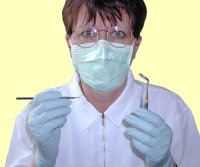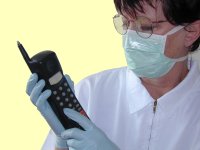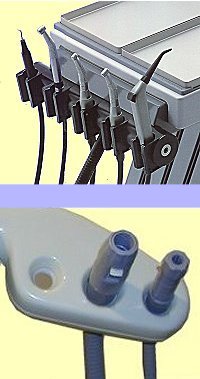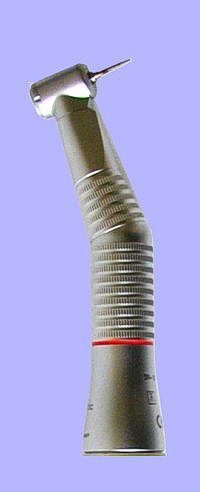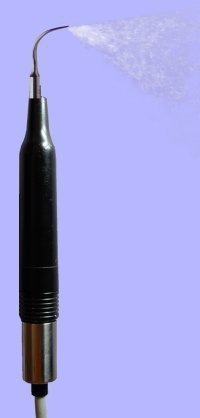THE HIGH-SPEED DRILL
The high-speed drill or airotor is beyond any doubt the most fearful weapon out of a dentist's armory.
It is air-driven, makes about 400.000 rpm. and produces a dreadful sound.
A drill running that needs cooling water to prevent burning.
The water used for cooling is heavily contaminated in many dental surgeries.
High-speed drills are basically small turbines driven by compressed air.
When a dentist stops drilling, he first stops the airpressure.
The little turbine in the drillhead (still in the mouth) will spin a couple of seconds before it stops.
This spinning has unpleasant consequences:
A spinning turbine without compressed air will become a pump.
It has been found that moisture from the mouth ( possibly containig saliva or blood ) is sucked back into the drill head about one inch.
The last Dutch Healthcare Inspection showed that :
83.5 % of all dentists interviewed did not clean, sterilise or disinfect these drill heads according to the official guidelines.
( Dutch Healthcare Inspection report " Infection-prevention in Dental Offices May 1998 " )
If a dentist only cleans the surface of these drill-heads, the sucked up material will be expelled into the next patient's (or your)
mouth.
Cooling- and spray water in dental equipment often contains ten thousand times more micro-organisms than our domestic tap-water. ( visit -links)
Later we will discuss the problem of contaminated water in dentistry in more detail.
| 